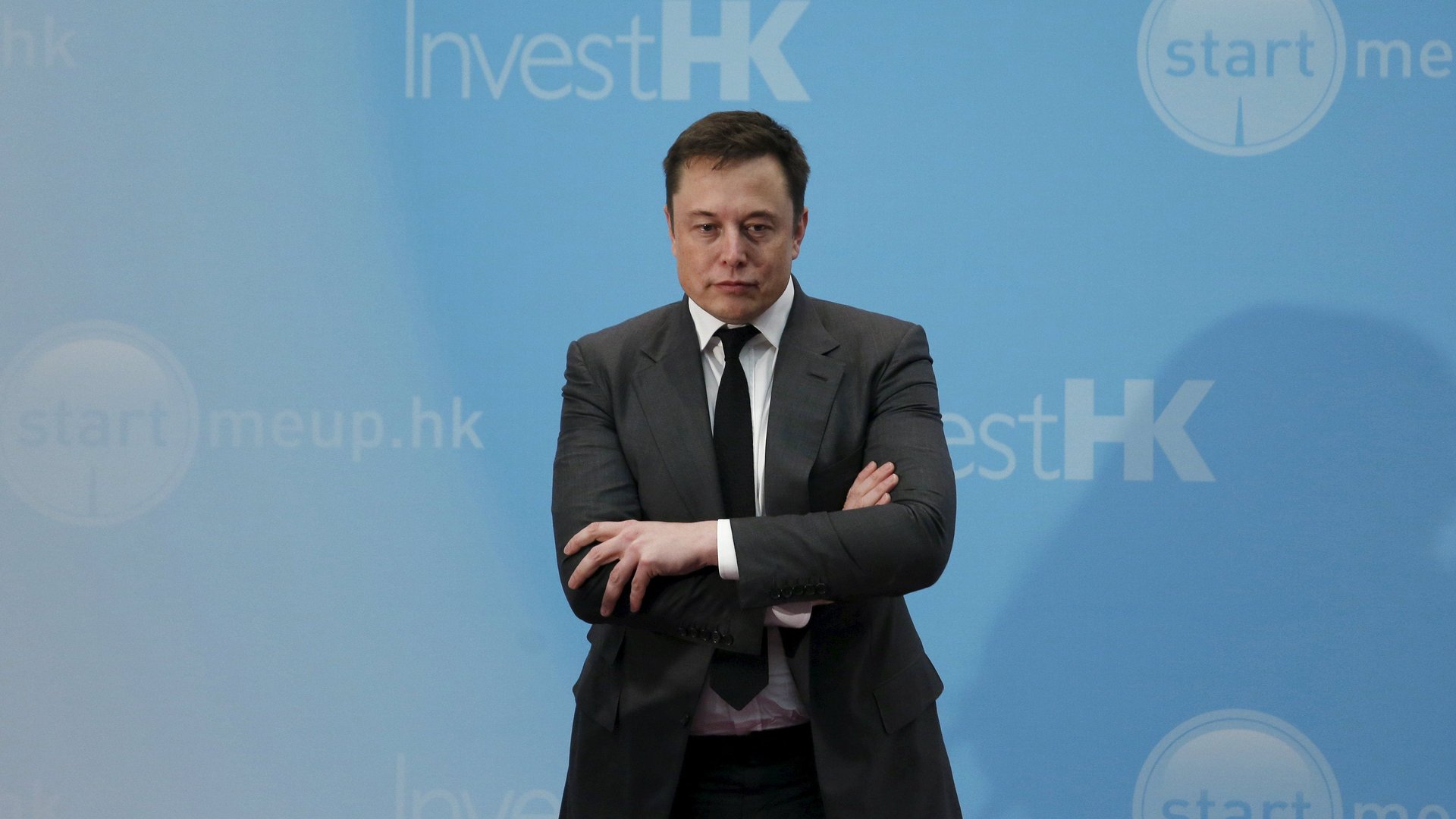Ford is a better bet than Tesla, according to bond investors
Tesla CEO Elon Musk has charmed just about everyone: Stock traders, media members, and now even grumpy bond investors. The entrepreneur’s electric carmaker raised $1.8 billion in a bond issue last week, which is $300 million more than it initially set out to borrow. That said, sober-minded bond investors still think Ford is a better bet than Tesla.


Tesla CEO Elon Musk has charmed just about everyone: Stock traders, media members, and now even grumpy bond investors. The entrepreneur’s electric carmaker raised $1.8 billion in a bond issue last week, which is $300 million more than it initially set out to borrow. That said, sober-minded bond investors still think Ford is a better bet than Tesla.
Investors said Tesla’s inexperience in the bond world showed, according to the Financial Times (paywall), with one suggesting that Musk “didn’t really know how to talk to bondholders.” While people who buy stocks appreciate the risks inherent in betting on a company’s future prospects, bond investors have less upside and thus take on less risk. Their main concern with Tesla is whether it will generate enough cash to repay them in time.
Ford appears much less exciting on the outside, but it has done two things Tesla so far hasn’t: It already helped change the world once, and has regularly generated billion-dollar profits for shareholders.
That said, the bond market has been kind to Tesla. The deal’s 5.3% interest rate was a record for its maturity and credit quality, according to Bloomberg. But there’s a limit to the enthusiasm. While Tesla is more valuable than Ford in the stock market, with a capitalization approaching $60 billion, debt investors charge Ford less to borrow money. Similar maturity bonds issued by the Dearborn, Michigan-based automaker yield about 4%, according to FactSet.
Musk’s company is expected to have negative cash flow into 2019, according to Moody’s, a credit ratings agency, and the Palo Alto-based firm has lost more than $700 million over the past year. That’s why Tesla’s debt is classified as “junk,” implying a higher risk that lenders won’t get their money back. Moody’s gives Tesla a B3 grade, six notches below “investment quality.” Ford’s bonds are rated seven levels higher.
A bit over 100 years ago, Ford faced similar challenges to Tesla. It was nearly out of cash by the time it sold its first Model A, in 1903. And while Tesla faces a lack of infrastructure in the form of electrical charging stations, Ford once faced a lack of paved roads. In 1908, Ford tackled that problem with its affordable, durable Model T. If Tesla’s Model 3 accomplishes something similar, skeptical bond investors will have helped the company get there.